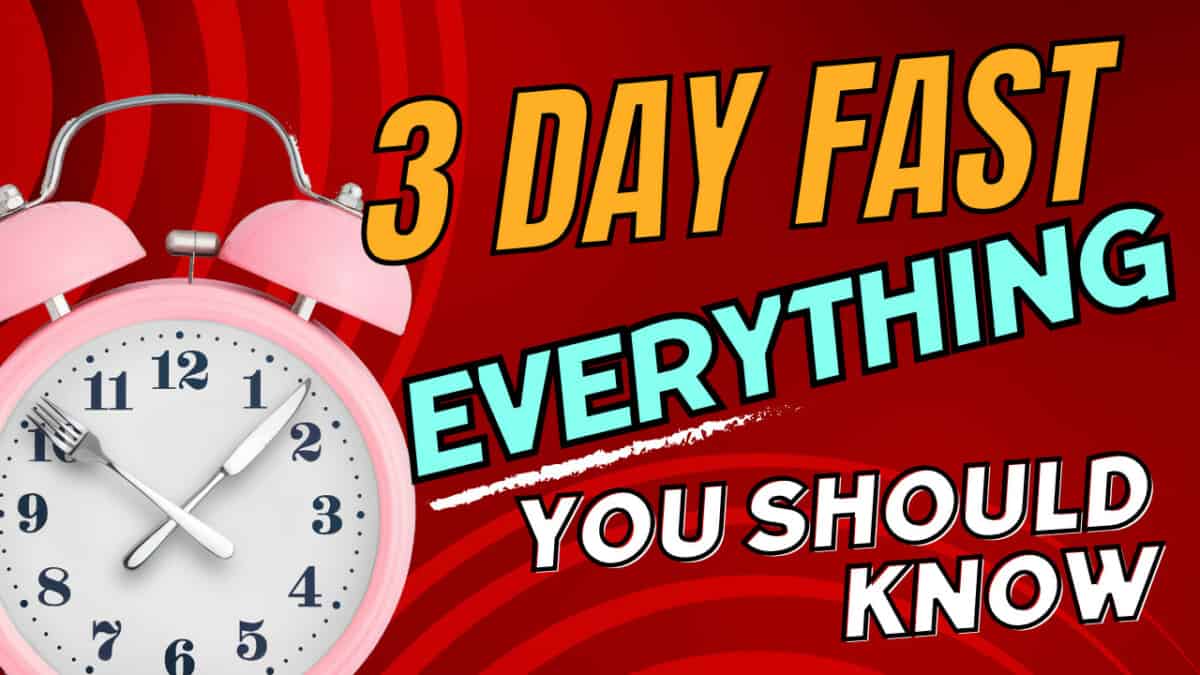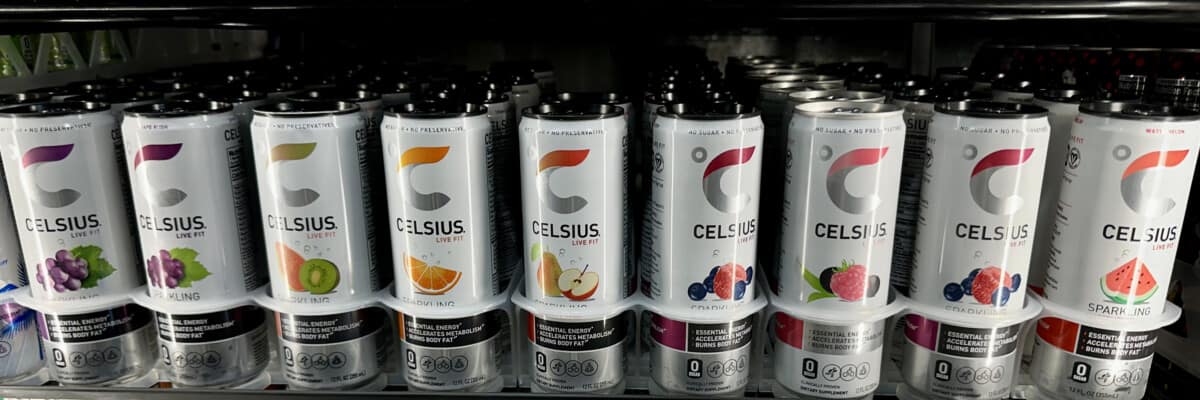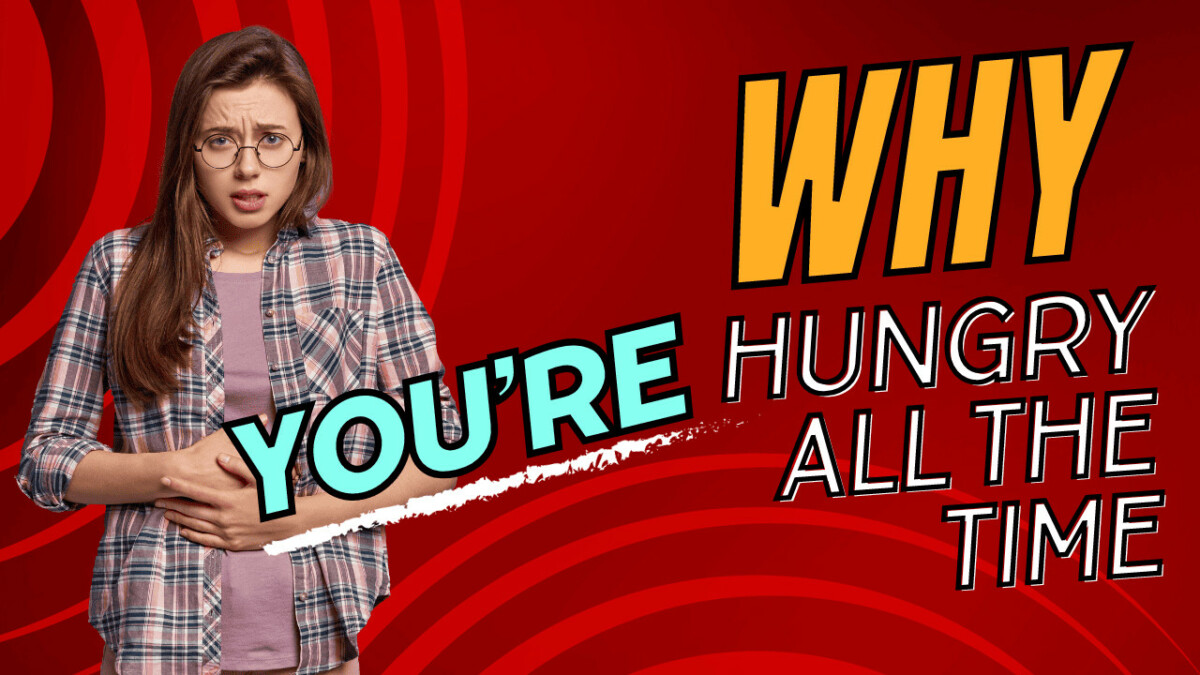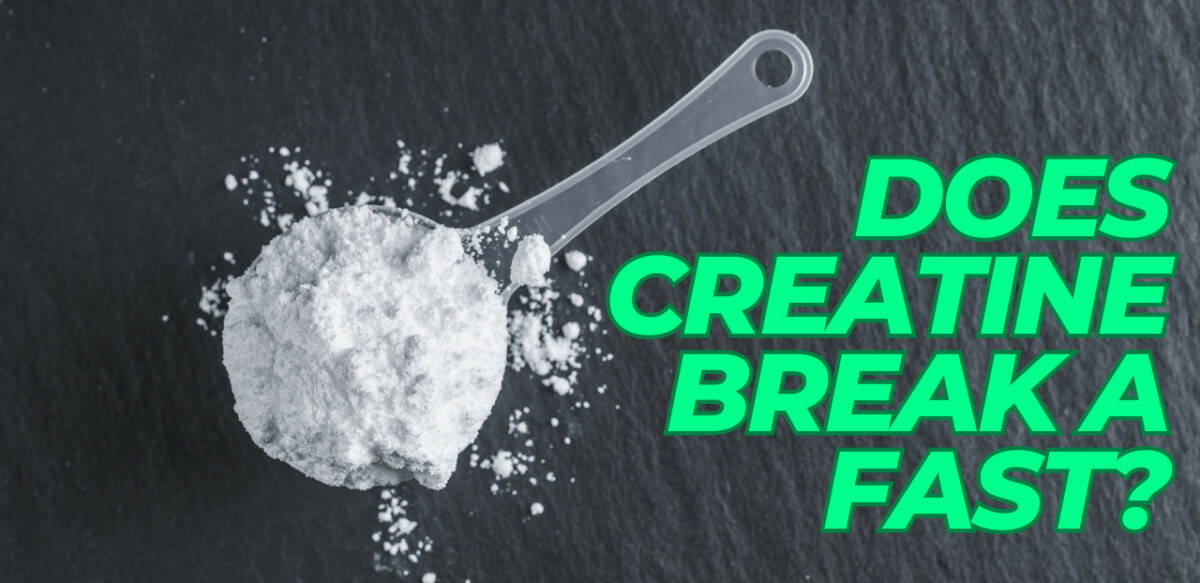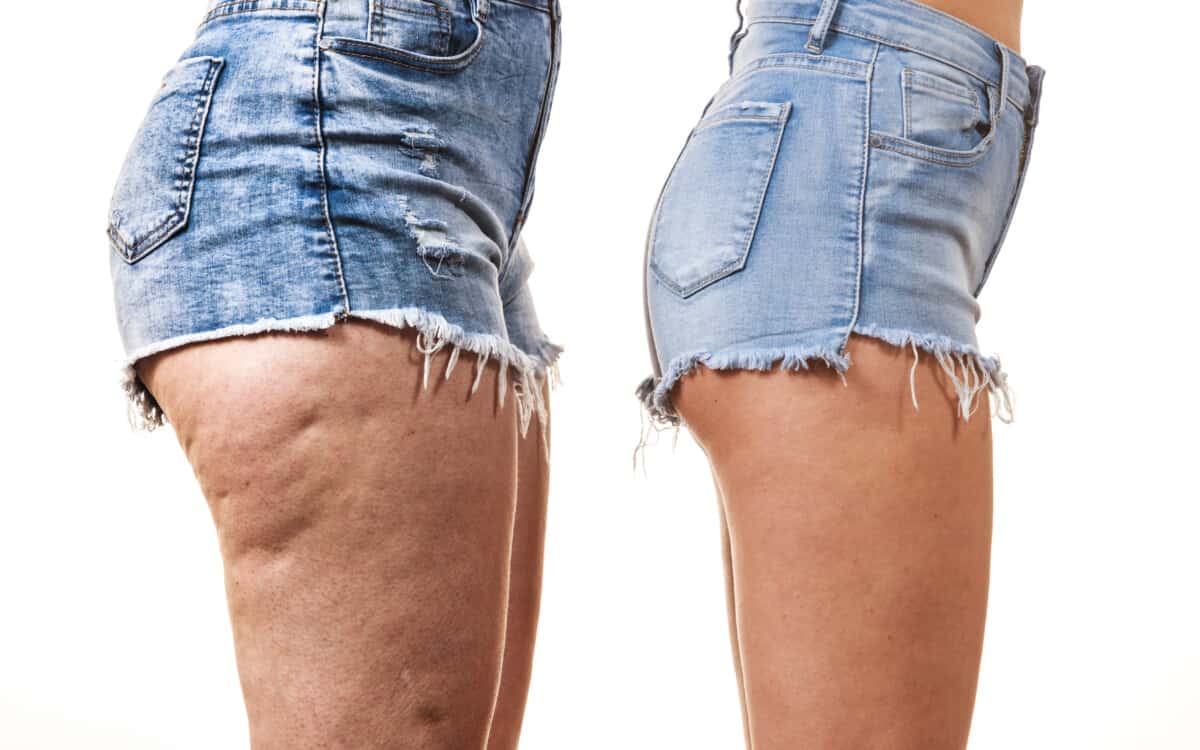Having tight hip flexors can be the cause of a lot of uncomfortable back pain that you don’t need to have.
You can be eating right, training hard and in peak health but if your hip flexors are tight then you could still have pain.
Almost everybody today in the Western world has tight hip flexors. It’s one of the main causes of back pain and discomfort in millions of people.
When your hip flexors tighten they will give you a lot of pain even though you can be healthy as a horse.
This can result in some nagging pains in your back, hips, and knees. It’ll make you feel like an old man getting out of bed in the morning.
Most people’s hips feel tight all the time. Your back can tighten up when you’re squatting, deadlifting or doing any lower body exercises.
This can increase stress on your body promoting weight gain. It can even cause you to look like you have a pot belly. Whoa!
Having tight hip flexors can cause an anterior pelvic tilt which will cause your belly to bulge out.
I’m sure you agree it’s hard to know if and what you should stretch or what exercises you should do to get rid of tight hip flexors.
By the end of this article, you should be able to loosen up your hips so you get rid of the back pain.
You’ll discover the best seven exercises you can do for tight hip flexors so you can loosen them up as quickly as possible.
How To Know If Your Hips Are Tight

Having tight hip flexors is not just from sitting down even though that is a big part of it.
Muscle imbalances are the main reason why your hip flexors are tight. You will need both stretches and exercises to correct it.
The hip flexors are a group of muscles that connect your hip to your lower back. It’s the only muscle connecting the top part of your body to lower part.
Your hip flexors are the main muscle group responsible for sprinting and jumping. So it’s going to need to be quite strong and dense, which also makes it more likely to become very tight.
Your hip flexor creates flexion in the hip which will allow you to bend forward and to lift your leg up.
Your psoas is also known as the “mighty psoas.” It’s responsible for stabilizing your spine and flexing the hip.

Since your psoas connects your legs to your spine it can affect your lower back without you even knowing it.
Your psoas is located deep in your anterior hip joint and connects to your lower spine through your pelvis.
Some symptoms of tight hip flexors are getting cramps in the thighs, hips and lower back when doing lower body exercise.
I’ll have a lot of people come up to me asking me why their back “gets tight” when they’re doing lower body exercises like squats, lunges, and deadlifts.
You might also notice that your lower belly sticks out because you have tight hip flexors.
This “pot belly syndrome” happens because you pelvis has an interior tilt to it because of tight hip flexors.
This is not only not attractive but can cause a lot of pain to people who want to have their best physical appearance. If you need to know how to get rid of hip dips then check out my other article.
What Causes You To Have Tight Hip Flexors

They say “smoking is the new sitting” for a very good reason and its one of the main reasons why you have tight hip flexors.
Overuse in the sitting position will cause your hip flexors to shorten and then tighten up.
We sit too much throughout the day. Whether we’re sitting at your desk at work, driving in your car and even watching TV on the couch.
Intense exercise like explosive sprinting, running and weightlifting can also cause your hips to tighten up.
Trigger points develop in your hip flexors contributing to the tightness and causing them to lock up.
Your hip joint will overcompensate by anterior tilting your pelvis and hyperextending your lower spine.
This gradually makes matters worse as it causes your back to tighten up. This eventually results in back pain, tight hips and the bulging of your belly.
If you’re constantly contracting the psoas muscle it will shorten and lose its flexibility and integrity.

This will result in your body creating a dangerous situation:
- Your quads can become overdeveloped
- Your glutes will turn off
- Your hamstrings will get weak
This is the recipe for having tight hip flexors and lower back pain.
I recommend getting a standing desk that goes from the sitting position to the standing to help balance out your sitting while at your desk.
Just getting a standing desk is not the answer because standing all day can also cause body pain.
Having weak glutes and hamstrings is another reason why your hip flexors are getting tight.
Sitting too much causes your glutes to “turn off” causing more muscle imbalances to happen.
Also not training your glutes and hamstrings enough in the gym will cause them to weaken. Many people only do squats, lunges, and step-ups which will further cause their hip flexors to tighten.
You need to have an equal strength of your glutes, hamstrings and hip flexors to create balance.
When you think about it your glutes don’t contract in daily life while you’re walking and standing so it’s easy for them to become weaker and weaker.
The Best Exercises For Tight Hip Flexors
Just stretching your hip flexors isn’t the answer to solve the problem.
You’re going to need to correct your imbalances with both stretching and muscle strengthening exercises.
You need to:
- stretch your hip flexors
- strengthen glutes & hamstrings
- strengthen your outer glutes & obliques
For a complete system on how to get rid of your tight hip flexors for good then I recommend checking out the Unlock Your Hips program.
Click here for the Unlock Your Hips program
Below you’ll find a video with the best exercises for tight hip flexors.
I’ve included the exercise descriptions and animated GIFs for your viewing pleasure.
Hip Flexor Trigger Point Release

Grab a tennis or lacrosse ball and your going to roll out your hip flexors to help release the trigger points that have developed inside them. Put your hand in your pocket and grabbed the piece of meat that is your hip. Wherever your fingers are (not your thumb) is where your hip flexors are. Place the tennis ball on your hip on the spot your fingers tips were touching. Now lay facedown on the ground leaning to the side the ball is on. Focus on relaxing your hips and abs as you gently roll back and forth over the area ironing out those tight hip flexors.
Kneeling Hip Flexor Stretch
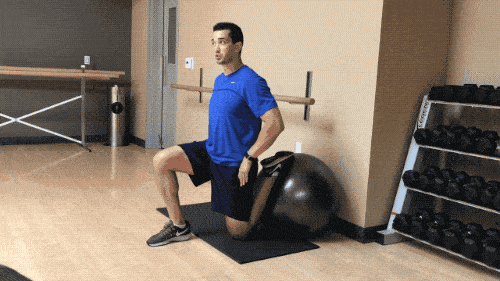
You’re going to need stability ball or you could also use your couch for this next exercise. Begin by placing the ball behind you against the wall. Then place the top of your foot on top of the ball as you bring your knee down to the floor keeping your lower leg against the ball. Make sure your feet are in line with your hips and not bowing out. Then tilt your hips upwards and make sure your chest isn’t puffed out. Now hold this position or you can use your arms to reach up over the knee in front you.
90/90 Hip Stretch
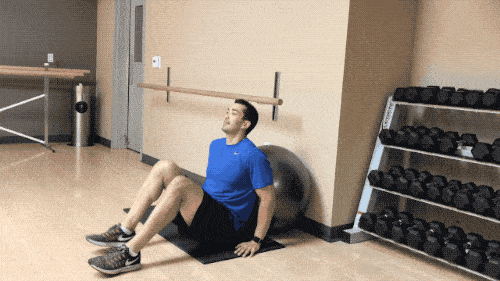
For the next stretch, you will also need a stability ball but you can use your couch at home as well. Place the stability ball up against the wall and sit down on the ground with your back against the wall. Place your ankle over your knee and push your hips back so they’re right next to the ball. Now bring the foot in front of you a little closer toward your hips to increase the intensity of the stretch.
Standing Hamstring Stretch
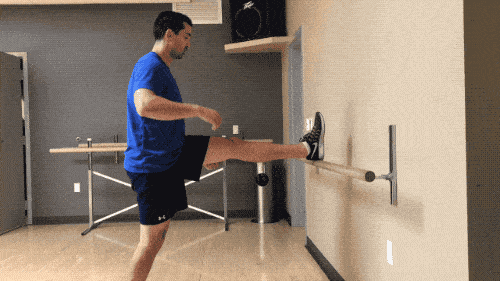
For this next stretch, you going to need a table that is about the same height as your hip. Start with your hips facing the table and place your foot on top of the table keeping your leg straight. Make sure your toes are pointed up and your knees locked out throughout the stretch. Be sure the foot on the ground is also pointed forward and not bowing out. You can gently lean forward on this stretch to increase its intensity.
Hamstring Curls
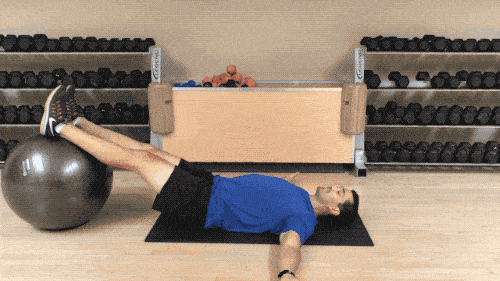
For this next exercise, you’re also going to need a stability ball. Lay on your back with your palms up out to the side and your feet on top of the ball. Raise your hips up off the ground so it makes a straight line from your heels to your shoulders. Then slowly curl the ball in toward your body while keeping your hips high so a straight line remains from your knees to your shoulders. After you roll the ball in slowly roll it back out to the starting position.
Side To Side Band Walks
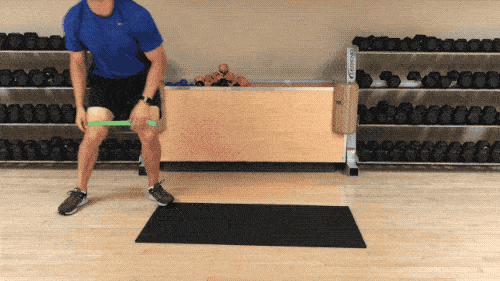
For this next exercise, you’re going to need a small band that you can wrap around your knees. Place the band above your knees and stand up in a semi-squatting position. Slowly begin stepping side to side going 10 paces one way before coming back 10 paces the other way.
Side Planks
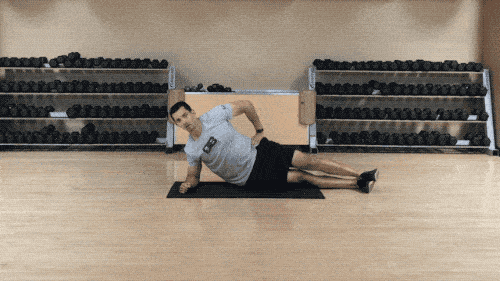
Lay on your side with your elbow underneath your shoulder and your feet together. Then raise your hips up off the ground as you create a straight line from your bottom shoulder to your bottom foot. Make sure your hips do not go back and you’re keeping your body square to the side wall. Make sure your hips don’t dip and you keep that straight line.
What are the symptoms of tight hip flexors?
Some of the symptoms of having tight hip flexors include back stiffness when you stand up after sitting down for length of time. Also if you notice any stiffness in the front part your hips and there’s a good chance your hip flexors are tight. If you notice any cramping or soreness on the front upper part of your thighs then that could also be a symptom of tight hip flexors.
Why are my hip flexor so tight?
Your hip flexors are the strongest most dense muscle on your entire body. When they’re in one position too long such as when you’re sitting then they’ll become a lot stiffer than they should be. Over time this constant sitting or standing eventually wears down the muscle integrity of your hip flexors causing them to tighten and lock up.
The Last Word
I’m sure you know just how much having tight hip flexors can make it much harder on your life.
Living a life with tight back pain from having tight hip flexors is not only uncomfortable but can cause serious injuries.
Sitting too much is one of the main culprits of having tight hip flexors. You should focus on moving more throughout the day and alternate between sitting and standing.
You can use these exercises above to loosen up your tight hip flexors and restore balance to your body.
Keep in mind that even if you are doing these exercises that your hips can still be tight if you’re sitting all day.
The only long-lasting way to correct the imbalance is to create balance in your body.
The best way to lose your tight hip flexors is to do these above exercises while increasing your movement throughout the day.
Josh holds a Bachelor’s degree in Exercise Physiology and Nutrition Science. He’s a Certified Strength and Conditioning Specialist (CSCS) by the National Strength and Conditioning Association and he’s a Certified Personal Trainer (CPT) by American Council on Exercise. He’s worked as a Strength and Conditioning Coach at the high school and college levels. He has over 15 years of experience as a personal trainer and nutrition coach. He strives to bring inspiration and results for people to live healthier lives through smart diet and exercise.

